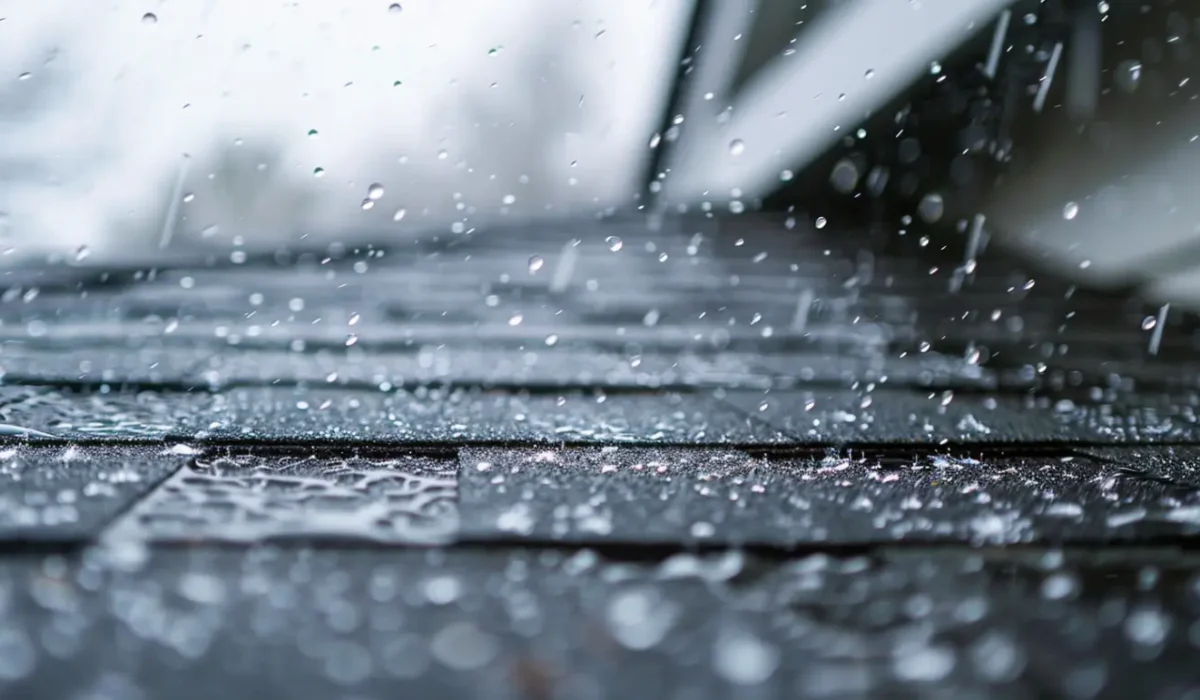Rain may seem harmless compared to hail or high winds, but over time, heavy rainfall can quietly inflict serious damage to your home’s roof. For homeowners in Keller, TX, where storms and downpours are common throughout the year, learning how to protect your roof from heavy rains is critical to maintaining your property’s integrity.
From minor leaks to full-blown structural issues, water is one of the most destructive elements your roof will face. This guide outlines practical, proactive steps every homeowner should take to shield their roof—and home—from the risks of excessive rainfall.
How Rain Harms Your Roof Over Time
Unlike hail or wind, rain damage is often gradual and invisible—until it becomes a major problem. The most common issues caused by heavy rainfall include:
- Roof leaks from missing or compromised shingles
- Rotting wood decking under the roof surface
- Damaged insulation from moisture penetration
- Mold and mildew inside attics and ceilings
- Stained ceilings and interior walls
Texas rainstorms can bring sudden downpours that overwhelm drainage systems and expose any weaknesses in your roof. The older your roof, the more vulnerable it becomes to repeated moisture exposure.
1. Start With a Roof Inspection
The most effective way to protect your roof is to know its current condition. Schedule a professional inspection at least once a year—or immediately after a major storm.
A trusted local expert like KangaRoof in Keller, TX can identify:
- Loose or missing shingles
- Cracked or corroded flashing
- Clogged or sagging gutters
- Ponding water in roof valleys
- Deteriorating underlayment or decking
Catching these issues early gives you time to make affordable repairs before heavy rains turn them into major leaks or structural failures.
2. Clean and Maintain Your Gutters
Your gutter system plays a key role in keeping your roof safe from water damage. If gutters or downspouts are clogged with leaves, debris, or dirt, rainwater can overflow and seep under your roof’s edge.
To prevent this:
- Clean gutters at least twice a year
- Ensure downspouts direct water at least 3 feet from your foundation
- Repair any sagging, disconnected, or rusted gutter sections
- Install gutter guards to reduce future clogging
Poor gutter maintenance is one of the most common causes of rain-related roof damage in Texas homes.
3. Inspect and Repair Flashing
Flashing is the thin metal barrier that seals roof joints—around chimneys, vents, skylights, and valleys. Heavy rains can exploit even the smallest gaps in flashing, allowing water to enter your home.
Make sure your flashing is:
- Intact and properly fastened
- Free of rust or corrosion
- Sealed with high-quality roofing caulk
If you notice any damage, have it repaired quickly to prevent water intrusion during the next storm.
4. Replace Damaged or Missing Shingles
A single missing or broken shingle may not seem urgent, but it can lead to water infiltration during even moderate rainfall. Over time, repeated exposure to moisture can rot the decking underneath and compromise your roof’s structure.
Replacing damaged shingles is a fast, affordable fix that protects your home and prevents far more costly repairs later.
Ask your roofer about impact-resistant shingles from Owens Corning, which offer superior durability and resistance to water, hail, and wind—ideal for Keller’s storm-prone climate.
5. Improve Attic Ventilation and Insulation
Your attic plays a hidden but vital role in protecting your roof from moisture damage. Poor ventilation traps humidity, while inadequate insulation allows temperature swings that promote condensation and mold.
A well-ventilated attic helps:
- Reduce heat buildup
- Prevent moisture accumulation
- Extend the life of your roofing materials
During your next inspection, ask your contractor to evaluate your attic for proper airflow and insulation levels. Upgrading this system can dramatically improve your roof’s resistance to moisture-related issues.
6. Address Interior Signs of Water Damage Immediately
Heavy rains can cause interior damage long before you spot an exterior problem. Keep an eye out for:
- Water stains on ceilings or walls
- Bubbling or peeling paint
- Musty odors in upper floors or attic
- Sagging spots in ceilings
These signs often indicate a roof leak and should be addressed immediately. Waiting may cause mold growth or structural weakening that’s far more expensive to resolve.
7. Choose the Right Contractor
Whether you’re making repairs or replacing your roof entirely, work with a contractor who understands local weather conditions and uses quality materials designed for Texas storms.
KangaRoof has been helping homeowners in Keller, TX stay dry and secure through decades of unpredictable weather. Their certified team delivers lasting results and clear communication throughout every step of the process.
Final Thoughts
Heavy rains don’t need to be a threat to your home. With smart preparation, regular inspections, and quick repairs, your roof can stand strong against Keller’s stormy skies.
Don’t wait for the next downpour to find out your roof isn’t ready—call KangaRoof today and ensure your home stays protected from the top down.
Read also our blog: How to Handle Roof Damage After a Hailstorm
